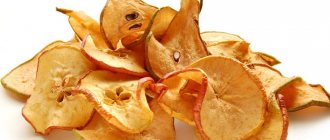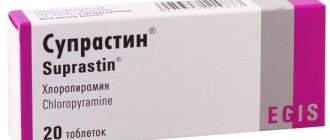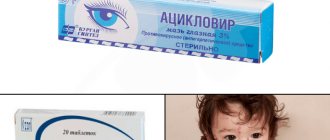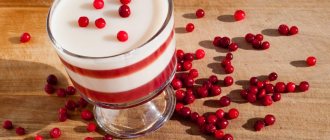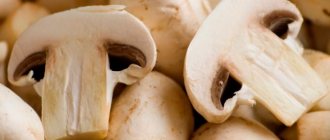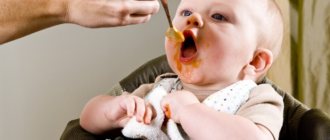Many mothers transfer their child to the “adult table” too early, forgetting that the child’s body cannot cope with such stress.
Before offering a child under three years of age something new to eat, you need to make sure that his body is able to cope with such food. Obviously, potato chips, soda water and fast food are not the best food for a child, but what else is fraught with danger for the baby.
Baking
Butter dough and products based on it should not be given to a child under three years of age. Such food overloads the still weak and not fully formed pancreas. In addition, most store-bought products contain chemical additives, which can also be harmful to health.
Chocolate
Cocoa is a very strong allergen, so giving your child chocolate and cocoa-based products is not recommended. Candy and other sweets can cause a child to develop a complex form of allergy.
Ice cream
Before offering your child ice cream, you need to familiarize yourself with its composition. If ice cream contains vegetable fats, artificial flavors, emulsifiers, thickeners and stabilizers, then it automatically falls into the list of prohibited foods for children.
Cheesecakes in chocolate glaze
These products are also not particularly beneficial. Curd cheeses contain a lot of sugar, fats and various additives, so their composition needs to be studied no less carefully than the composition of ice cream.
Meat and fish broths
Even a one and a half year old baby should not be offered dishes cooked in meat and fish broths. During their preparation, the liquid is saturated with extractive substances that irritate the child’s gastrointestinal tract. It is best to prepare soups in vegetable broths, and serve boiled meat and fish separately with dishes.
Milk sausage and sausages
High-quality sausages and milk sausage are not taboo, but you can eat these products no more than once a week. They contain a lot of additives and salt, but whether they contain natural meat is an open question.
Seafood
Seafood is a strong allergen, and moreover, it is poorly digestible. If it is a frozen processed product, there is no guarantee that the seafood was raised, harvested and frozen in accordance with all regulations and is free of heavy metals and chemicals.
Red caviar (and other types of salted caviar)
Caviar contains a lot of vitamins E and D, but it is better not to rush to introduce this product into your child’s menu, as it contains a lot of salt. In addition, for better preservation, emulsifiers are added to it, which often cause intestinal disorders.
Vegetable pickles
Many children love pickled cucumbers or tomatoes, but you need to be careful with them, as excess salt and spices can cause kidney problems.
Mushrooms
Nutritionists recommend introducing a child to mushrooms no earlier than seven years of age. Mushrooms are a difficult product to digest; moreover, they often cause severe poisoning (and in some cases can lead to death).
First complementary foods: list of products for babies up to one year old.
5-8 months.
As mentioned above, children are usually introduced to a new product at the age of six months. According to WHO recommendations, if a child is underweight, dairy-free, gluten-free cereals are first introduced: buckwheat or rice. If there are no problems with weight, then complementary feeding begins with vegetable purees: zucchini, cauliflower or broccoli (read the article about the rules of first complementary feeding). They start giving half a teaspoon and watch the child’s reaction. If during the day the baby is alert, the stool has not changed, and no allergic reaction has appeared, it means that the body has accepted the new food well. You can continue feeding, increasing the portion every day.
At the next stage, millet, oatmeal and corn porridge are introduced, and vegetables - pumpkin, carrots. Porridge can be prepared with milk: either with breast milk or formula. You can also buy milk porridge in the store, be sure to study the composition of the product. It is allowed to add a little vegetable oil. It is better to introduce butter into complementary foods from 7 months.
Now you can introduce fruit puree and juices: pear, apple, banana, prunes.
From 7 months you can include wheat bread and unsweetened cookies in your diet.
8-10 months.
After the baby has become familiar with the basic vegetables, fruits and cereals, we begin to introduce fermented milk products. Kefir should be started with 15-20 ml. Cottage cheese is administered according to the same scheme as the rest, starting with half a teaspoon, increasing the volume to 30-40 grams per day, depending on the baby’s weight, then the cottage cheese can be mixed with fruit puree. It is advisable to include yogurt and biolact in the menu from 9-10 months.
Meat puree. Meat should be lean varieties: chicken, turkey, beef, rabbit. If the baby does not like meat, then this puree can be mixed with vegetable puree. The consistency of this puree is more delicate, and children usually eat this dish with pleasure.
Vegetables can include boiled white cabbage, potatoes, and beets. At this age, the baby’s menu becomes more varied and for lunch you can already cook vegetable soups with the addition of a small amount of vegetable oil. The cooked soup is ground in a blender to a puree-like consistency.
Children are also offered half a chicken yolk.
11-12 months.
If the baby does not have any problems with introducing complementary foods and does not exhibit an allergic reaction, then at the age of 10 months it is allowed to introduce low-fat varieties of fish - pollock or cod fillets. It is very important to remove all the bones from the fish.
From 11 months, the children's menu can include meat broth, pasta, and good quality cheese. Berries are also introduced. It is advisable that these berries come from grandma’s garden and must be fresh. It is preferable to start your acquaintance with blueberries, currants, and raspberries. Doctors do not recommend giving strawberries to children under one year of age, because... it is considered a highly allergenic product.
From 12 months, the child switches to the so-called “common table”, which includes the main group of products. It is up to the mother to decide whether to exclude breast milk from the baby’s diet, taking into account her own wishes and the recommendations of the pediatrician.
It is important to remember that each child is individual and the recommendations described above give only a general idea of the first feeding. Always consult your pediatrician about introducing a particular product!
Mayonnaise and ketchup in packages
Read also: The main thing is not to be shy: how to breastfeed your baby in public places?
It is better to give your baby homemade mayonnaise. Factory-produced mayonnaise and ketchup contain many chemical additives, thanks to which the product remains fresh for a long time. However, these additives disrupt the functioning of the digestive system and can lead to a decrease in the baby’s immunity.
What foods are strictly prohibited for children?
We are what we eat. Many of us have probably heard this phrase, so it is very important to monitor the baby’s proper nutrition. And, although, as they grow older, parents and grandmothers really want to please the baby with various goodies, it is still worth refraining from harmful foods in order to avoid health problems in the future.
List of prohibited products:
- Mushrooms
- Soda
- Sweets
- Store-bought sausages, sausages, smoked meats
- Fat meat
- Salty and fried foods
- Seafood
- Seasonings
- Canned food
- Chips, crackers, store-bought semi-finished products
Chips and croutons
Such snacks have nothing to do with naturalness and high quality. Chips and crackers consist of a lot of chemicals - flavors, dyes, taste enhancers. Therefore, it is strictly contraindicated for children under 3 years of age.
Read also: How to raise a child to be a genius: 5 unusual methods
Sweets and confectionery
Despite the fact that children love sweets very much, it is not recommended to buy them.
This especially applies to
- chocolate (it is generally very allergenic), - sugar-containing products, - confectionery, - high-calorie flour products, - ice cream.
From baked goods you can:
- children's cookies, - biscuits, - dryers, - buns (once a day).
Sweets can be replaced with products that contain fructose instead of sugar:
- marshmallows, - fruit marmalade, - marshmallows.
With caution, you can give honey and jam little by little.
Foods that should not be given to children under 3 years of age.
Not a single mother who fiercely cares about the health of her baby will give him sweet soda, chips, mayonnaise and other harmful foods. And the stomach of a child who has not reached 3 years of age cannot digest all the foods that parents give to their children. Therefore, I decided to tell you what foods should not be fed to children under 3 years of age.
1. Meat and fish broths. It is better to replace them with vegetables. When cooking meat and fish, too many substances pass into the broth, which irritate the child’s vulnerable gastrointestinal tract. So cook soups in vegetable broth, and serve meat separately from them.
2. “Doctor’s” sausage. It is better to give a piece of cheese instead. Boiled sausages and sausages contain a lot of salt, food additives and unhealthy fats. They interfere with the absorption of calcium and increase the load on the circulatory system.
3. Mushrooms. Children should not eat wild mushrooms or greenhouse champignons. It is better if you do not give it to them until school age. The fact is that mushrooms can cause digestive upset in a child because they are very difficult to digest.
4. Seafood. Many kids like boiled squid or shrimp, but it is important to know that they are difficult to digest and can cause allergies. Caviar is also undesirable for babies due to the abundance of salt and irritating effect on the stomach.
5. Canned vegetables are also undesirable for children under 3 years of age. Olives, olives, pickled cucumber - some children really like salted vegetables. But due to the abundance of spices and salt, nutritionists do not recommend giving such dishes to your child.
6. Glazed cheese curds. This product contains too much sugar and fat, as well as stabilizers, emulsifiers and other “chemicals”. There is very little cottage cheese there, so glazed cheese curds cannot be a substitute for this product.
7. Store-bought ice cream. Ice cream is known to be one of the most common allergens. If your baby is lactose intolerant, he shouldn't have ice cream. In addition, this product contains emulsifiers, flavors, stabilizers, and so on. So it's better to learn how to make ice cream at home.
8. Store-bought baked goods. Various pastries, cakes, waffles and other products from the store create a lot of stress on the child’s body. Industrially produced baked goods contain a lot of allergens and sugar, as well as not very healthy additives.
9. Chocolate. Children under three years of age should not be given chocolate. The risk of allergies becomes even higher if artificial flavoring agents are added to chocolates. But after two years, you can easily offer your child cocoa. Before introducing cocoa into your child’s diet for the first time, you need to check if he is allergic to this product.
10. Exotic fruits. It is important to remember that you need to eat the foods that grow in your homeland. As for the child’s body, exotic fruits can harm it. Fruits such as pomelo and mango can not only cause severe allergies, but also cause severe poisoning. Be vigilant!
Did you like the article? - Share with your friends. I will be grateful for your feedback and comments!
Subscribe to updates to always be aware of the news...
We accept with caution! List of products that cause allergies in children
Of course, allergic reactions are extremely individual. The baby’s immune system may react negatively to the food that mom and dad ate completely calmly. This list is compiled solely on the basis of statistical data. So, what most often causes allergies in children?
- Seafood. Shrimp, squid, mussels, oysters and even black and red caviar are very strong allergens, despite the fact that they are extremely nutritious. In addition, they contain a lot of cholesterol that is harmful to the body.
- Red fish. It contains a large amount of the amino acid histidine, which promotes the formation of histamine (a substance responsible for the external manifestations of allergies).
- Nuts. Nut allergies are one of the most common types.
- Citruses, exotic fruits, red apples.
- Some berries. Most often, allergies are caused by strawberries, strawberries, raspberries, black currants and blackberries.
- Honey. It is quite easy to check whether your baby will be allergic to honey, without even giving him this product. If during the flowering period (April-July) a child scratches his eyes and has a runny nose, then most likely he will be allergic to honey. This is because the irritant is pollen that gets into the honey (sometimes even a small amount of pollen remaining on the bees’ legs is enough).
Precisely because allergies are individual, you need to give your baby any new product (even if it is not among those listed) in small quantities and carefully monitor the reaction. It happens that even the most harmless, at first glance, food can cause rashes, itching and swelling.
Black and red caviar, other seafood
Our mothers and grandmothers tried to feed their children this delicacy, even hiding it in purees and mixing it with vegetables. But the particularly resourceful children did not want to eat this salt-rich product. And absolutely rightly so - such products act on the mucous membrane of the gastrointestinal tract, which can lead to the appearance of disorders.
In addition, all kinds of shrimp and squid are considered heavy food and are difficult to digest. Seafood is also excluded from our children's baby food. It is noteworthy that children from other countries where seafood is present in the diet all year round, for example, in Italy, Spain, that is, “hereditary” residents of the Mediterranean, can eat them even at an early age, without fear of constipation or diathesis. And since seafood is not our common product, our children are not adapted to such food.
Mushrooms
Vegetarians think this product is safe, and they are wrong. Yes, mushrooms have beneficial properties for an adult with a developing digestive system. But in a preschool child, even over 3 years old, this product can cause digestive upset, as it is difficult to digest.
Chocolate, ice cream and other dubious sweets
Such a popular delicacy in our childhood as ice cream is not as harmless as our mothers thought. Although, perhaps, before it was done completely differently. Currently, ice cream contains emulsifiers, stabilizers, thickeners and flavor enhancers that are not at all safe for children’s health. But there is no trace of natural milk there. It was replaced with palm and other fats.
The same can be said about glazed cheese curds - well, it doesn’t contain milk or cottage cheese, but there are more than enough other additives.
Products containing cocoa can also be harmful to small bodies due to the risk of allergies. And if sweets contain artificial flavoring components in addition to cocoa, then red cheeks and indigestion cannot be avoided.
So children under 3 years old can only be given natural sweets - jam, dried fruits, sweet fruits and berries.
High-calorie sweets
It is better not to give your child Snickers, nougat and caramel bars, white chocolate marshmallows and fudge candies. These products contain a lot of sugar, so they are very high in calories, and they also damage the baby’s tooth enamel. Indulging in sweets leads to hyperglycemia - elevated blood sugar levels. Due to hypoglycemia, by the way, children very often become hyperactive.
Mushrooms
It is no coincidence that mushrooms collected near roads or industrial enterprises are not recommended for consumption even by adults. The fact is that mushrooms, like a sponge, absorb heavy metals and toxins that enter the soil. Well, it’s better not to give kids any mushrooms at all, because enzymes that can break down the quinine contained in mushrooms are produced in children around the age of seven. And even more so, you should not feed your child mushrooms bought “from grandma” on the street: a mushroom that will only cause diarrhea in an adult can cause severe food poisoning in a child.
Unreasonable prohibitions or why you can’t cut a child’s hair under one year old?
There are a number of prohibitions for children that should be classified as superstitions. Many mothers seriously ask such a strange question: why can’t they cut their hair for up to a year?
- This prohibition is associated with giving mystical powers to hair; they say that if you cut off a child’s hair, he will be stupid and poor.
- There is another explanation for this: in Ancient Rus' there was a high mortality rate among children, a lot of babies simply did not live to see one year old, it was believed that if a child crossed this line, then most likely he would not die, so at exactly 1 year of age they took tonsure ”, which symbolized that the baby was already becoming a member of the family.
Other strange prohibitions:
- you can’t kiss the baby’s feet - it’s too late to learn to walk,
- You can’t kiss a child on the lips - he will talk late.
The prohibitions are unfounded and can be interpreted solely on the basis of hygiene standards.
- You should not allow your child to look in the mirror. A mirror has always been considered a mystical object; there was a belief that in a mirror a baby can see his past and get scared, however, as practice shows, most babies look at themselves in the mirror with great pleasure and smile.
- You can't look at a sleeping baby - he will become fearful. You can watch, but you shouldn’t make noise or touch a sleeping child. A sudden awakening can really frighten the baby.
What a child under one year old should not do is undoubtedly up to the parents to decide, but they should be reasonable and not listen to overly emotional stories from grandmothers about superstitions.
How to cook for a child?
Children under three years old can be cooked in several ways:
- cook; this applies to cooking meat, vegetables, eggs, fish, cereals. After cooking, the products should be cut into small pieces or mashed with a fork;
- steam it. Use a double boiler, this will preserve the usefulness of the products;
- cook in the oven, in a sleeve or foil;
- for children over 2 years old, you can lightly fry the product in vegetable or olive oil and then simmer. This method is suitable for fish, cutlets and meatballs.
Industrial baked goods, cakes, pastries
Butter dough creates an excessive load on the fragile pancreas of the little gourmet. Moreover, preservatives and other harmful ingredients are obviously added to cakes and pastries that have a shelf life of several months and are stored without refrigeration.
Sometimes parents uncontrollably allow a child over three years old to gobble up marmalades and toffees, and even drink soda, citing the fact that the child has already grown up. But even in preschoolers and primary schoolchildren, the digestive system is not yet strong enough to enjoy all the delights of the modern culinary world. And recently there have been more children with allergies. So parents should monitor their children's menu more carefully.

